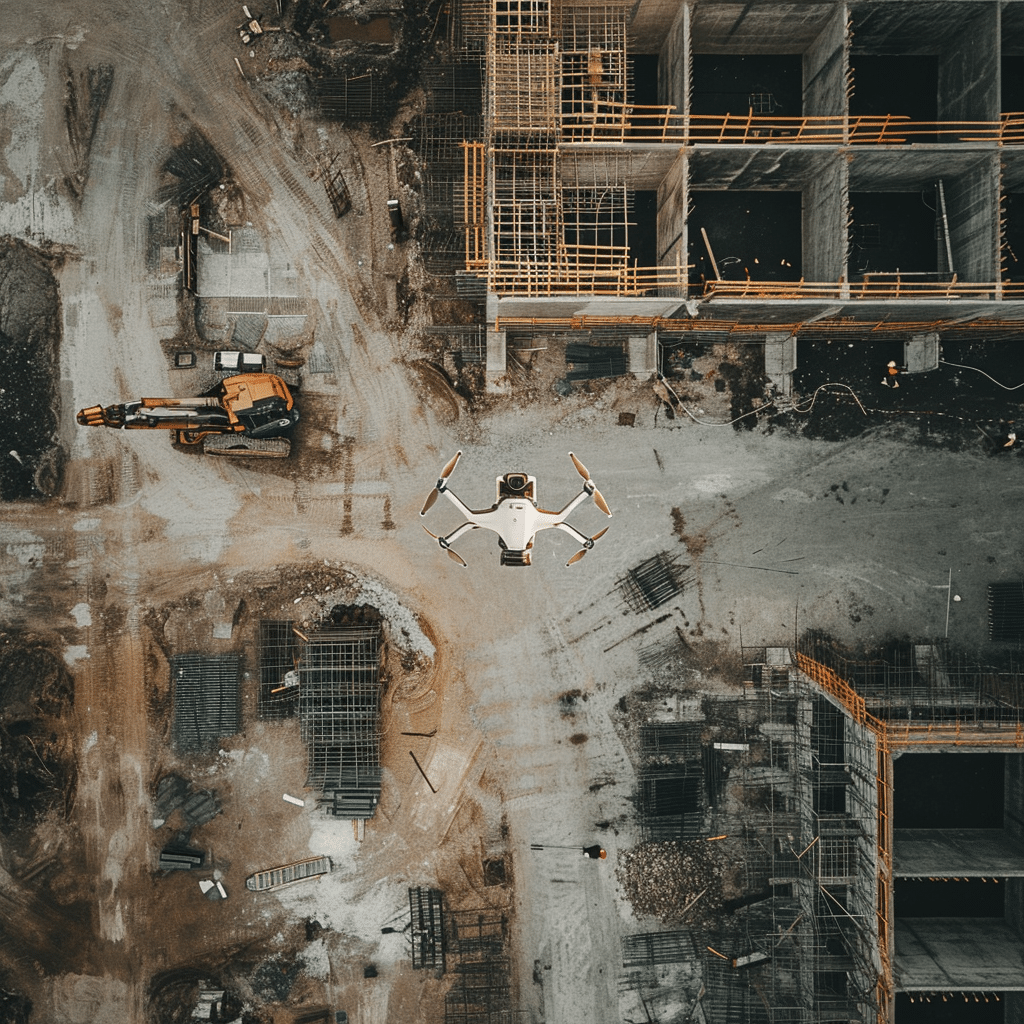The construction industry, a cornerstone of our global economy, is on the brink of a technological revolution. As we step into 2024, it’s crucial to recognise and adapt to the emerging trends that are reshaping this sector. From 3D concrete printing to exoskeletons, and the soaring use of drones, these innovations are practical solutions driving efficiency, safety, and sustainability in construction.
1. 3D Printing: Transforming Construction Efficiency
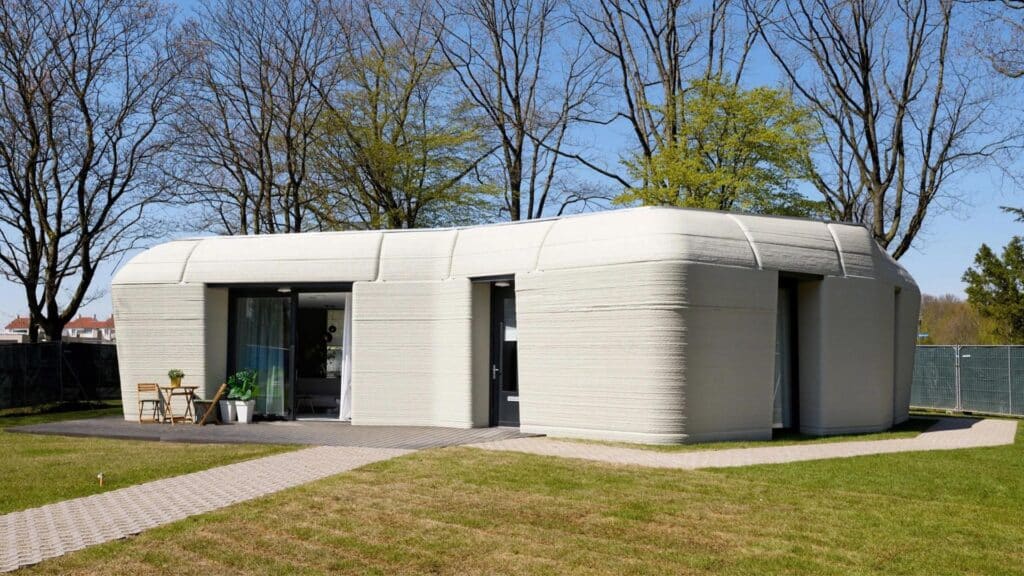
The advent of 3D Concrete Printing (3DCP) is a game-changer, changing how we approach building and infrastructure development. This technology streamlines the construction process, significantly cutting down time and labour costs. The precision and speed of 3D printing allow for the creation of complex structures with remarkable accuracy, ensuring faster construction times and optimal resource utilisation. The impact? A drastic reduction in delays and cost overruns, propelling the industry towards a more efficient and sustainable future.
Key Highlights:
Rapid Construction: 3D printing significantly speeds up the building process, enabling faster project completion through continuous, automated construction methods.
Precision and Complexity: This technology allows for the creation of complex and intricate designs with exceptional accuracy, pushing the boundaries of architectural innovation.
Cost-Effective: By reducing labour and material costs and minimising waste, 3D printing offers a more economical approach to construction, leading to significant cost savings.
Read Also: Applying lean construction to residential projects
Read Also : 3 construction industry trends in 2023
2. Exoskeletons: Enhancing Worker Safety and Productivity
Exoskeletons are modifying worker safety and productivity in the construction industry. These wearable machines mitigate the risks associated with repetitive tasks, reducing the strain on workers’ bodies. The statistics are telling – with musculoskeletal disorders (MSD) being a major concern in the sector, exoskeletons offer a much-needed solution. By supporting various body parts, they prevent injuries but also boost overall efficiency, making them an invaluable asset in modern construction.
Key Highlights:
Reduced Strain: Exoskeletons significantly alleviate musculoskeletal disorders, reducing the physical burden on workers during strenuous tasks.
Increased Productivity: By enhancing physical capabilities, exoskeletons allow workers to perform tasks more efficiently and with less fatigue.
Cost Savings: The use of exoskeletons in construction reduces health-related expenses and downtime, leading to improved overall work efficiency and cost-effectiveness.
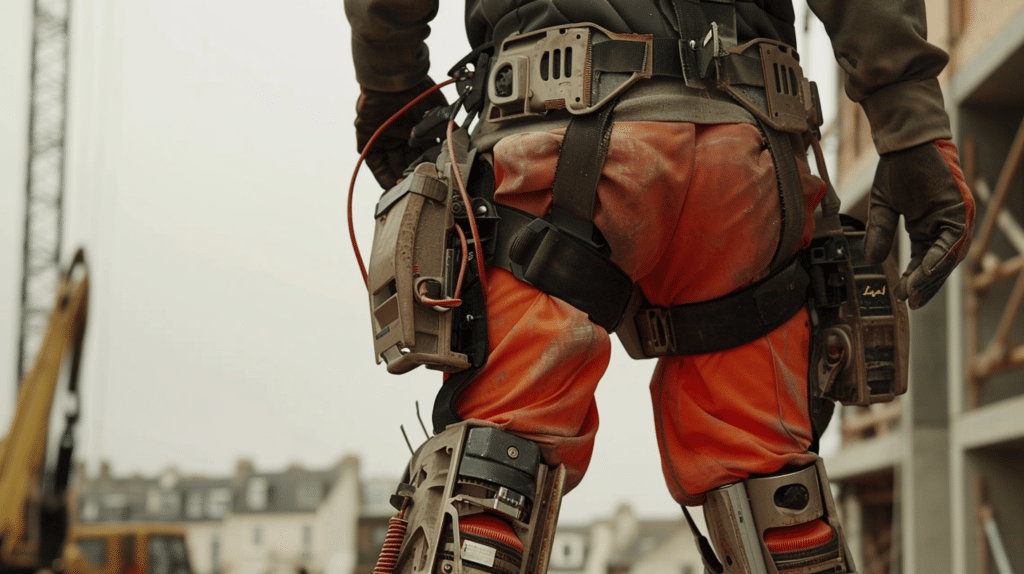
3. Drones: A Sky-High Leap in Construction Management
Drones have experienced a meteoric rise in the construction industry, offering a bird’s-eye view that transforms project management. Drones in construction streamline site inspections, enhance safety monitoring, and aid in project management by providing real-time data. They are also used for topographic mapping, high-risk area surveys, and thermal imaging to assess energy efficiency.
With a 239% year-over-year growth in usage, drones are a staple in modern construction, simplifying complex projects and providing invaluable insights throughout the project lifecycle.
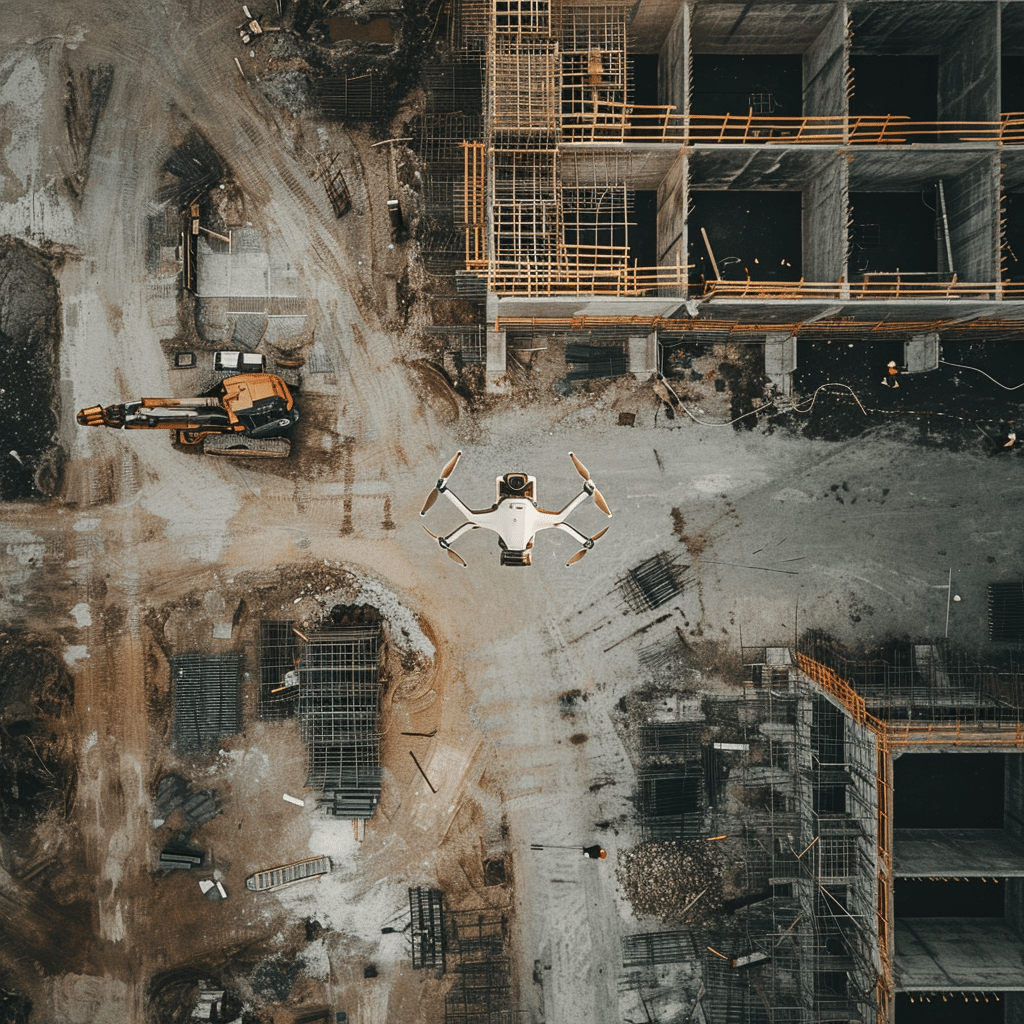
Key Highlights:
Enhanced Monitoring: Drones offer real-time tracking of construction progress, enabling quicker and more accurate updates.
Improved Safety: Aerial surveillance through drones significantly reduces risks, especially in hard-to-reach areas.
Data-Rich Insights: With detailed imagery and data collection, drones provide valuable information for more informed decision-making in construction projects.
4. Zero Net Carbon Buildings: Paving the Way for a Sustainable Future
As the world grapples with climate change, the construction industry plays a pivotal role in mitigating its impacts. Zero Net Carbon (ZNC) buildings emerge as a beacon of hope, addressing the urgent need to reduce CO2 emissions. Defined as structures that are highly energy efficient and meet their operational energy consumption through renewable sources, ZNC buildings represent a critical shift towards sustainability.
Step-by-Step Guide to Achieving ZNC Status:
1. Natural Ventilation: Implementing ceiling fans and other ventilation strategies enhances air circulation, reducing the need for artificial cooling.
2. Reflective Surfaces: Balancing light and heat through thoughtful building design minimises heat transfer, leveraging natural sunlight without the accompanying thermal increase.
3. Energy-Saving Light Bulbs: Integrating smart lighting controls like occupancy and photoelectric sensors dramatically cuts down energy usage.
4. Low-Flow Faucets: Reducing water consumption through efficient restroom and landscaping fixtures is a vital step in achieving ZNC.
5. On-Site Energy Production: Harnessing renewable energy sources directly at the building site is a cornerstone of ZNC buildings.
6. Lower-Carbon Materials: Selecting construction materials with lower embodied energy helps reduce the overall carbon footprint of the building.
7. Native Plants: Incorporating native flora in landscaping saves water but also supports local ecosystems.


Key Highlights:
Energy Efficiency: Prioritising energy-saving measures in building design.
Renewable Energy Integration: Meeting operational energy needs with renewable sources.
Sustainable Practices: Adopting eco-friendly materials and water conservation techniques.
5. Robotics: Revolutionising Construction with Efficiency and Safety
Robotics are transforming construction, solving old challenges and bringing new efficiencies. From automated bricklaying to precise concrete work, and accurate welding, these machines speed up tasks and reduce labour strain. They also handle material transportation, making site operations smoother. For project planning, robots play a key role in surveying and mapping, ensuring accuracy from the start. In demolition, their use leads to safer and more efficient processes.
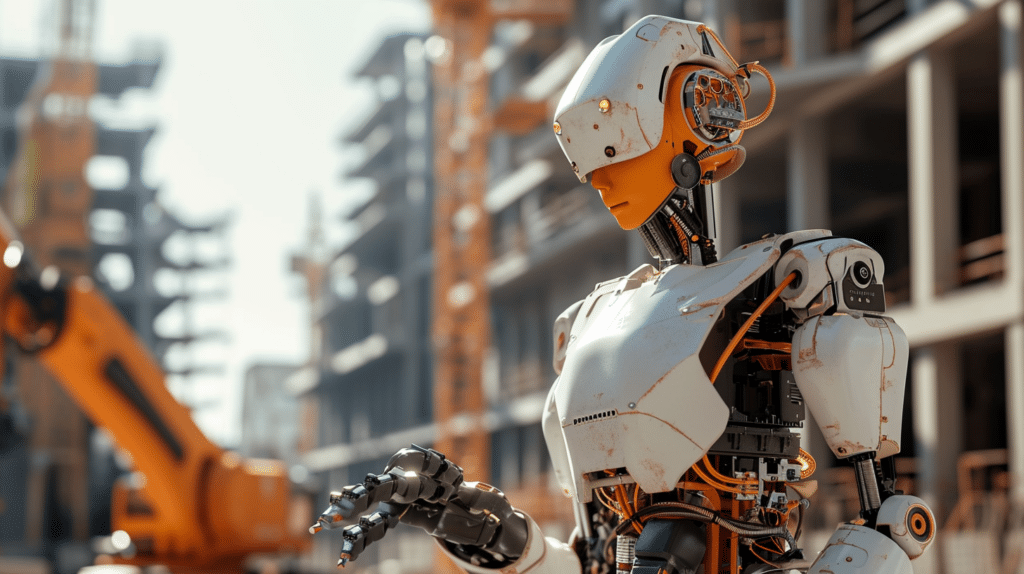
Robotics in Construction: Human and Robot Working Together
Robotics bring several key advantages to construction:
Boosting Productivity: Just like in manufacturing, robots in construction increase the speed and quality of work.
Improving Safety: By handling dangerous tasks, robots cut down the risk of injuries and fatalities on site.
Efficiency in Operations: Robots take on repetitive tasks such as lifting and welding, freeing workers to focus on more complex parts of construction projects.
Robots are also an answer to labour shortages. They keep projects moving even when skilled workers are scarce. During events like pandemics, they help maintain project continuity.
Despite the rise of robotics, human skills in decision-making, planning, and organisation remain crucial. This new era is about combining human expertise with robotic efficiency.
Read Also: Why the slow uptake of technology in construction is holding the industry back
Read Also : How project managers are using technology to ensure on-budget and on-time construction
6. Off-Site Construction: A Modern Approach to Building Efficiency

Off-site construction fundamentally changes how buildings are created, making the process more efficient and quality-driven.
This method shifts much of the construction work from outdoor sites to controlled factory environments. Here, issues like weather delays are eliminated, leading to smoother and faster project completion. In these factories, strict quality control is easier to maintain, ensuring each building component meets high standards.
This approach quickens the building process and also results in better-built, more durable structures.
Off-Site Construction: Combining Efficiency and Quality
Pre-Fabrication: In off-site facilities, components are designed, fabricated, and assembled, ensuring enhanced quality control. This process leads to higher precision in construction elements.
Modular Construction: This innovative method speeds up building assembly and offers more flexibility in design, making it possible to adapt to various architectural needs quickly.
In terms of benefits, off-site construction stands out in several ways:
Quality Assurance and Time Efficiency: The controlled environment of off-site facilities not only ensures higher standards of quality but also significantly reduces construction time and costs. This efficiency is a result of minimising the delays often encountered in traditional on-site construction, like weather conditions and logistical challenges.
Environmental Impact: Off-site construction contributes positively to the environment by reducing waste and site disturbance. The use of flying factories, or temporary facilities that move to different project sites, optimises resource use and minimises waste, showcasing an environmentally responsible approach.
– Focus on Permanent Structures: Unlike methods geared towards temporary setups, off-site construction is primarily used for permanent structures, bringing longevity and durability to the forefront of construction projects.
7. AI and Machine Learning: The Next Frontier in Construction Innovation
Artificial Intelligence (AI) and Machine Learning (ML) are changing the construction sector, offering solutions in various areas:
Safety Enhancements: AI systems can predict and prevent hazards, making sites safer.
Increased Productivity: AI automates routine tasks, allowing human workers to focus on more complex and creative work, boosting productivity and job satisfaction.
AI and ML also contribute to quality and efficiency in construction:
Quality Improvement: AI algorithms analyse large data sets to ensure high-quality standards in construction projects, leading to fewer errors and reliable outcomes.
Efficient Design and Planning: AI helps in smarter project planning and design. It processes large amounts of data quickly, reducing errors, saving time, and resources.
In the AI-enhanced construction environment, human expertise takes on new roles:
Creative Freedom and Decision-Making: AI takes over repetitive tasks, giving construction professionals more room for creativity. AI’s data analysis aids in informed decision-making, allowing human expertise to be used more effectively.
The integration of AI and ML with human skills is reshaping construction, pushing the industry towards improved safety, efficiency, and quality.
Conclusion: Innovation for a Resilient Construction Industry
As we conclude our exploration of the 2024 trends in the construction industry, one thing is clear: innovation is key to building a more resilient, efficient, and sustainable future. From the potential of 3D printing and the safety and productivity enhancements offered by exoskeletons to the strategic advantages of drones, the transformative impact of robotics, the efficiency of off-site construction, and the cutting-edge advancements in AI and Machine Learning, each trend presents a unique opportunity to revolutionise how we approach construction.
As we move forward, integrating these trends will improve outcomes for workers, contracting companies, and end clients. The future of construction is bright, and it is up to us to harness these advancements and pave the way for a smarter, more innovative industry.
